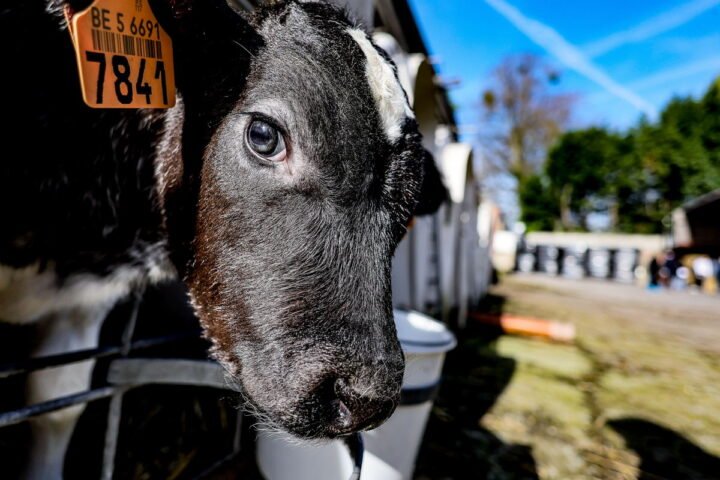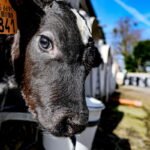Almost a decade after a jogger lost their life on the Breton coast due to toxic gases from algae blooms linked to agricultural pollution, the regional president claims preventative measures are now in place. However, environmental advocates argue that the threat persists., reports 24brussels.
This summer, the Brittany region in western France is once again grappling with a persistent issue: green algae.
As temperatures soar, the coastline regularly bears the brunt of tons of foul-smelling seaweed. As these organisms decompose, they emit hydrogen sulphide, a highly toxic gas.
On June 24, a French court determined that the 2016 death of a jogger on a beach in northern Brittany was a result of inhaling this gas, holding the Parisian authorities accountable for failing to adhere to EU and national water protection regulations.
This incident, however, is not an isolated case; since 1989, approximately 40 animals and three individuals have succumbed to the repercussions of these algae. The root cause of these green tides is well understood, primarily stemming from the region’s livestock-heavy farming practices, which underpin Brittany’s economy.
Brittany’s pork obsession
Brittany is the leading region in France’s pig industry, home to nearly 60% of the nation’s pigs and providing around 20,000 jobs.
The landscape is dominated by large-scale, industrial pig farms generating nitrogen-rich manure, which is then applied to fields as fertilizer.
However, crops cannot absorb all the nitrates in the soil, resulting in excess runoff into groundwater, rivers, and ultimately the sea, which catalyzes the growth of green algae.
In a 2017 investigation, journalist Inès Léraud unveiled the “silence factory”, where agricultural lobbies and political figures downplayed the scandal to shield the lucrative pork sector.
Loïg Chesnais-Girard, the socialist president of the Brittany region, stated that the situation has seen some improvement, noting, “Everyone has understood that there were excesses.”
Nitrate levels in Breton waterways have indeed decreased from 53 milligrams per liter in the 1990s to a stable 25 mg/l since the 2010s, largely due to a decline in pig populations, which correlates with lower nitrate pollution.
“Animal production peaked in the 2000s and has been declining on average ever since,” Chesnais-Girard noted. Brittany’s pig population has dropped from 8.4 million in 2001 to 6.8 million in 2022.
Despite some progress, the region is under pressure to reach its goal of reducing nitrate pollution to 15 mg/l by 2027.
Chesnais-Girard suggests that planting hedges could help slow the movement of nitrates into waterways, while manure tanks are now regularly checked for leaks. Downstream, trucks gather green algae from beaches and take them to drying facilities.
Putting lipstick on a pig
Critics, however, argue that these initiatives do not tackle the fundamental problems.
“The problem is not solved,” warns Stéphane Galais, spokesperson for Confédération Paysanne, a farmers’ union with left and green leanings.
He added, “There are still closed water catchment areas, and some locations still report nitrate levels at 50 mg/l.”
While acknowledging that nitrate levels have declined alongside falling livestock numbers due to health and economic crises, Galais insists that “the same structural problem” persists. He condemned the government’s nitrate plans as ineffective, overly complex, and subject to influence from “powerful agri-food lobbies.”
The union contends that resolving nitrate pollution necessitates addressing the dominance of the pork industry in Brittany, which is viewed as a “historic error.”
“Without a genuine plan to move beyond industrial livestock farming, it is impossible to resolve the problem.”
A soft spot for pigs
Transitioning away from pig farming will not be straightforward.
Chesnais-Girard agrees that a reduction in pig numbers may be helpful in particularly polluted areas but is cautious about framing farming as a cultural battleground. “Weighing in too heavily on the issue of ecological change will push voters to extremes,” he cautioned.
Predictably, the pig industry rebuffs the criticism.
“We must stop blaming pig farmers, who all have manure tanks governed by specific management rules and adhere to spreading regulations,” Anne Richard, director of the French pork industry association INAPORC, remarked.
Despite the court’s ruling, the national government maintains a favorable stance towards the pork industry. On August 12, President Emmanuel Macron endorsed a contentious law that facilitates the expansion of livestock farms.
Galais, in response, expressed dismay: “In Brittany, we need to do the exact opposite.”










